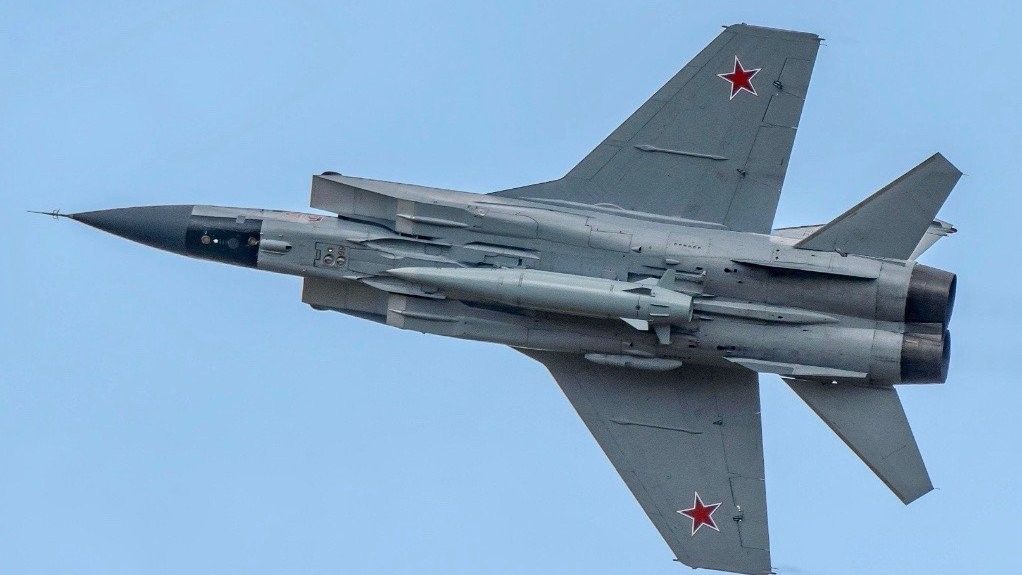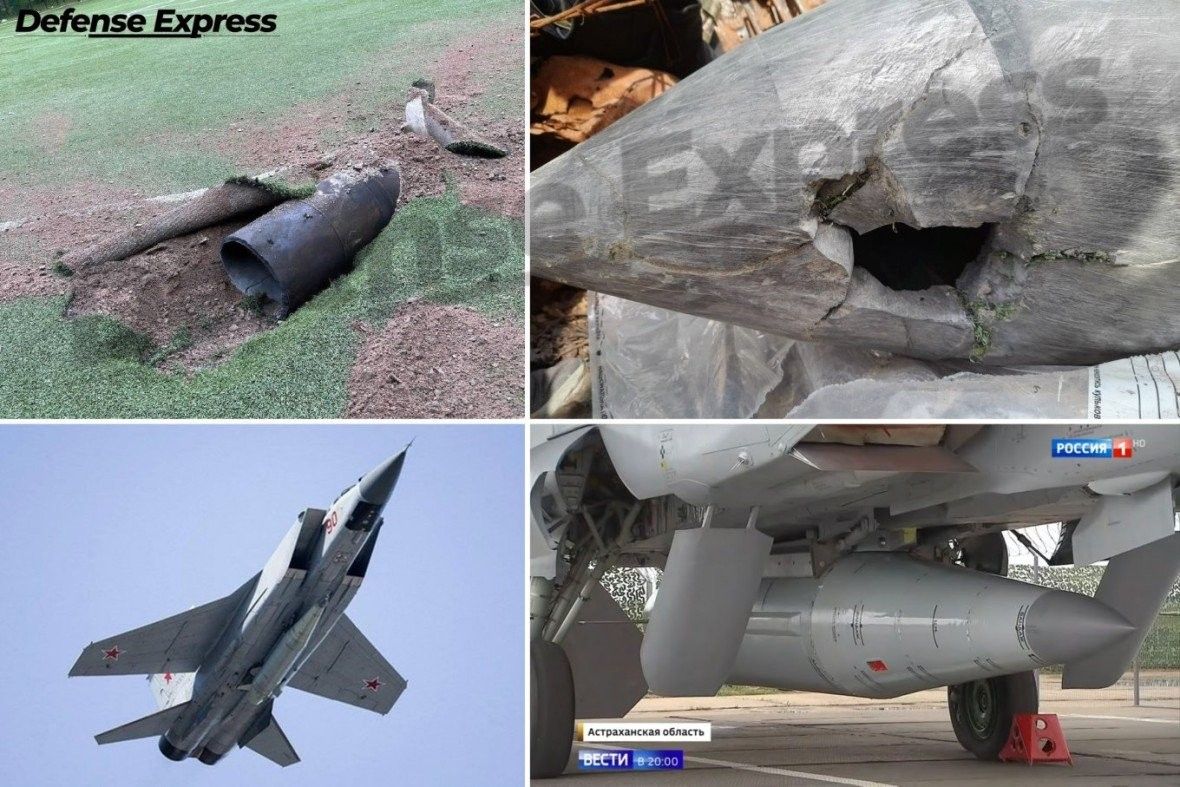
Ch-47M2 Kindzal missile under MiG-31K fighter jet.
Photograph. mil.ru
A Kh-47 Kinzhal hypersonic missile, said by the Russians to be “uninterceptable by Western anti-aircraft systems”, was shot down by Ukrainian air defenses over Kiev on the night of May 4. Fragments of the missile allowed it to be identified.
According to the Defense-Express portal, the loud explosion heard by residents of the Ukrainian capital at 2:40 PM on May 4 was caused by the downing of a Russian hypersonic missile. That night the Kiev city military administration officially announced an attack on Kiev, saying that in addition to the Shahed kamikaze drones, the attack also included missiles – “probably of the ballistic type”. Often one of Kiev’s stadiums or playgrounds.
The photographs show the characteristic shape of the nose of the Kindzhal rocket and traces of penetration by a fragment of an anti-aircraft shell. Most likely, it falls prey to the Patriot air defense system, which, among other things, is designed to combat ballistic missiles. It is worth noting here that the Russians advertise Ch-47 missiles as hypersonic weapons, but Kinzhal could not maintain it throughout the flight, but only at the initial stage. This means that when flying over long distances, its speed is significantly reduced and is comparable to other ballistic missiles. This is due to both the peculiarities of the Russian rocket’s propulsion system and the load on the structure when flying at hypersonic speeds.

Above photos show the broken parts of the missile that was shot down over Kiev. Below, a photo of the Kh-47 Kinzhal missile.
Photograph. Security-Express
The images of the decomposition provide interesting information about the materials used in the Russian “super weapon”, whose thermal resistance should be relatively low, so a very thick coating is used in the front part of the missile, which is significantly heated due to this. Due to friction during hypersonic flight, the Kinjal can reach speeds of up to Mach 10, which is about 12,000 km/h, but it certainly cannot be maintained for long.
The weapon’s existence was revealed during a speech by Vladimir Putin in 2018. A special version of the MiG-31K heavy fighter is used to carry a single Ch-47 Kinzhal missile. Currently, there are only a few copies of these machines belonging to a squadron of the Air and Space Forces of the Russian Federation. In the future, more Kindzhals will be carried by modernized Tu-22M3M bombers, and in the long run – by 5th generation Su-57 fighters.
The Kh-47M2 Kinzhal rocket is more common with Iskander ballistic missiles and may be modified to be launched from an air base. The body of the missile is about 7 meters long and the total weight is about 4 tons. The Kinzel warship, with a maximum weight of approximately 500 kg, can be conventional or nuclear (up to 500 kilotons). As a guidance system, the missile uses the INS/GLONASS navigation system, although the final phase of the flight should also use an optical system, since one of its main targets is large warships, including airfields. Its range is estimated to be over 1,500 km.

. “Hardcore internet junkie. Award-winning bacon ninja. Social media trailblazer. Subtly charming pop culture advocate. Falls down a lot.”
